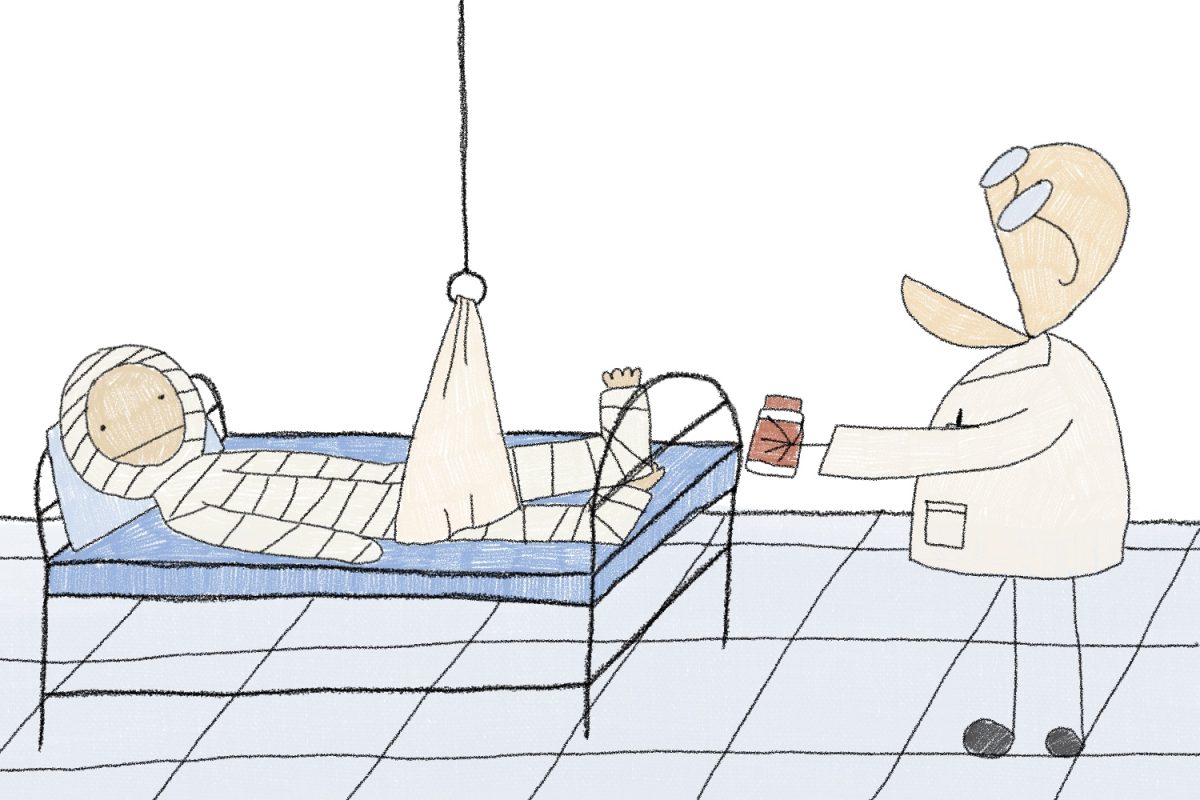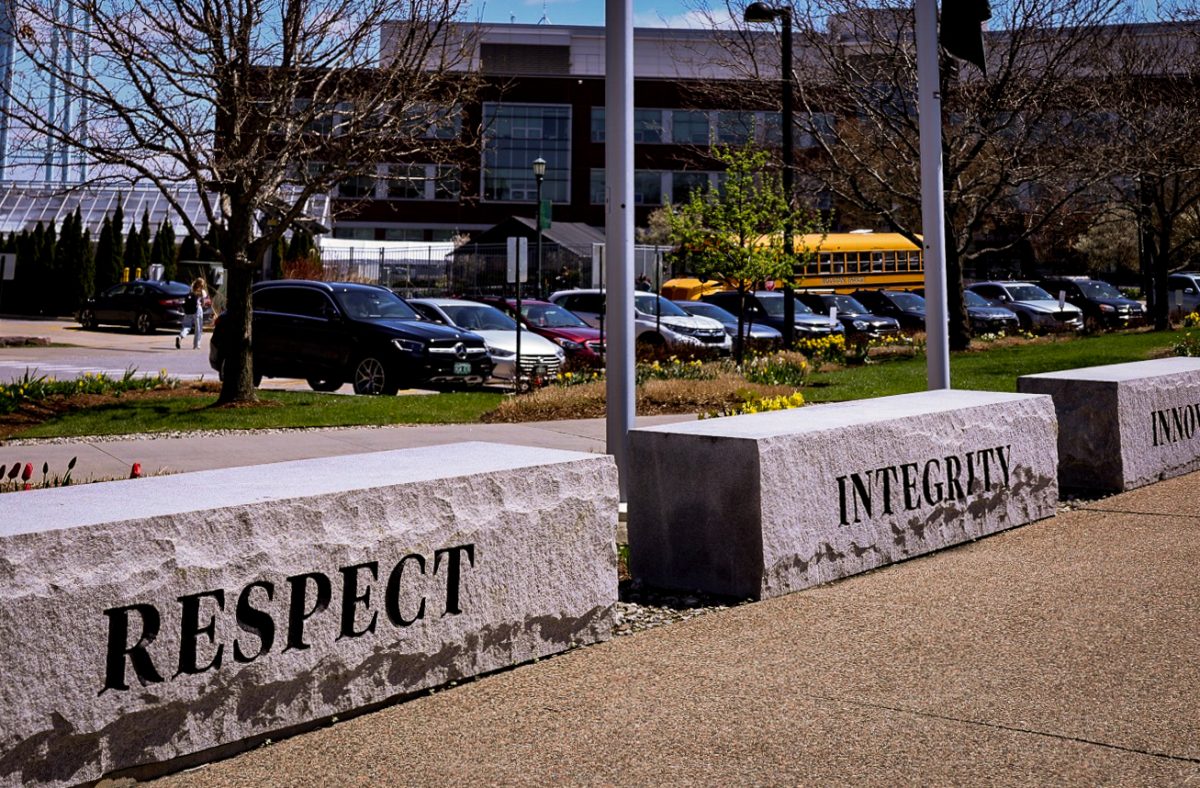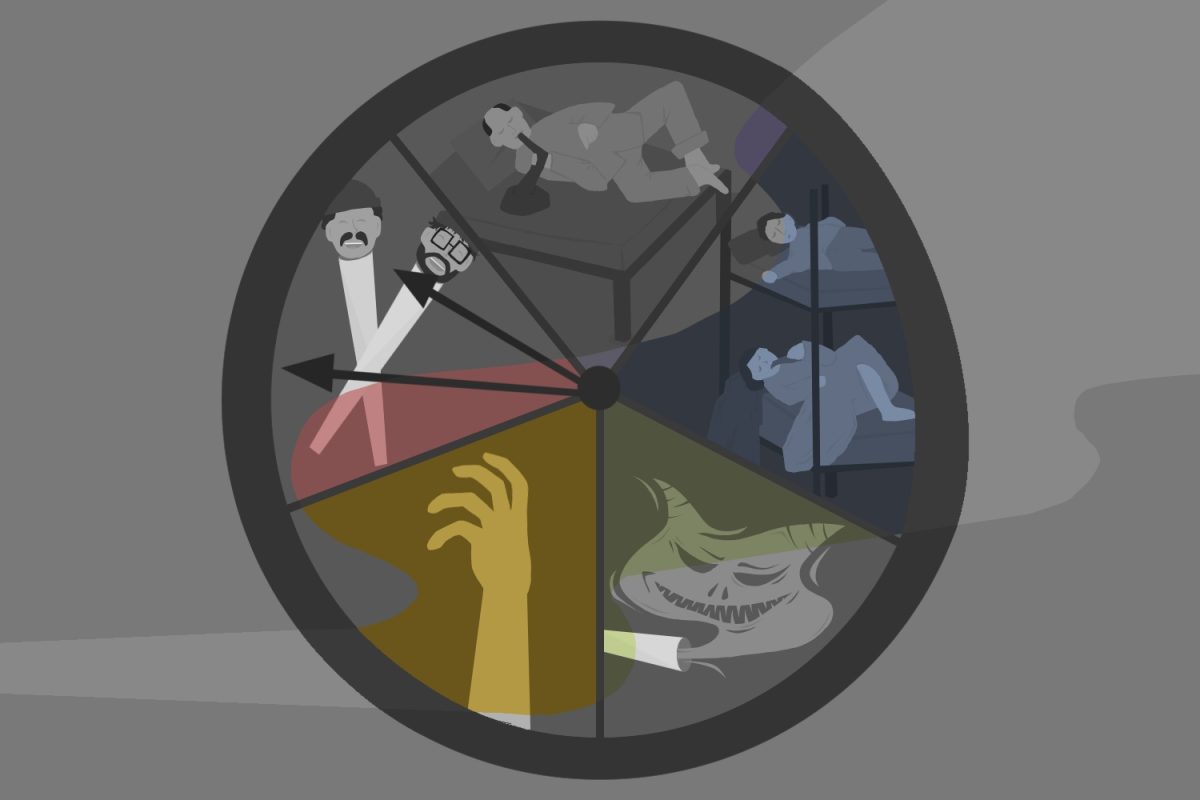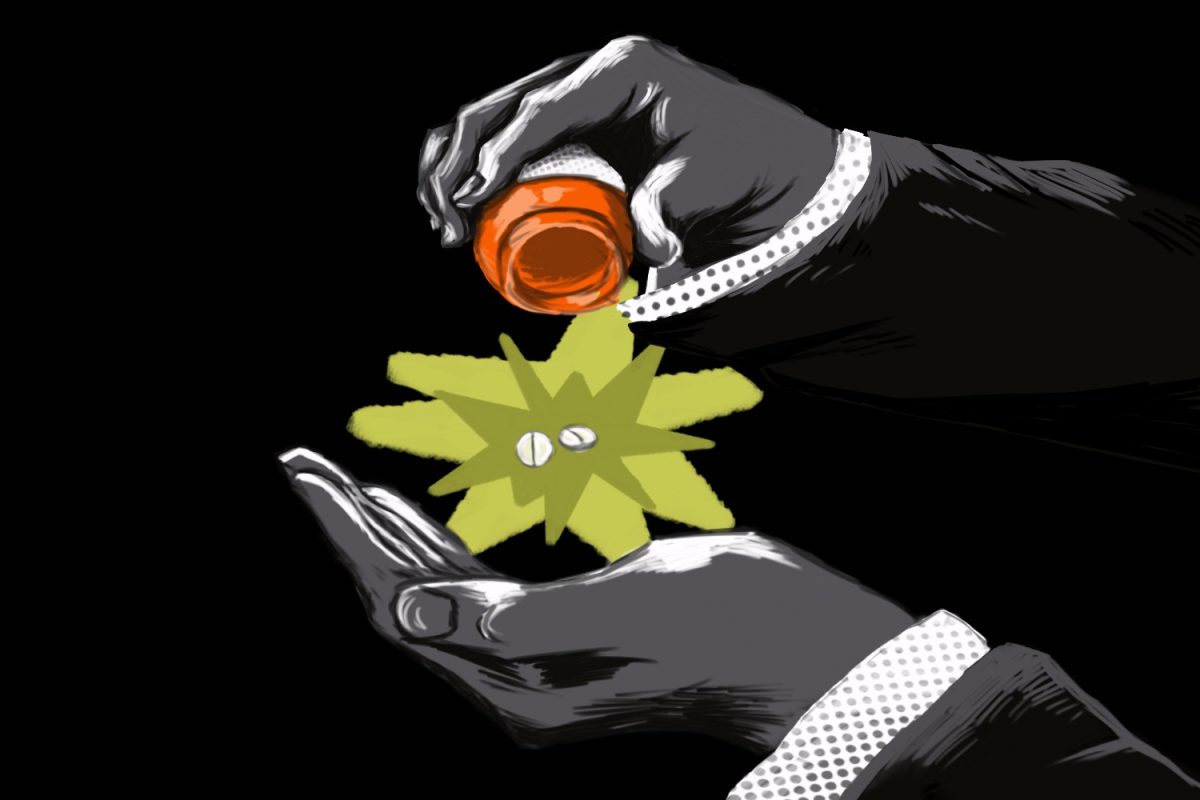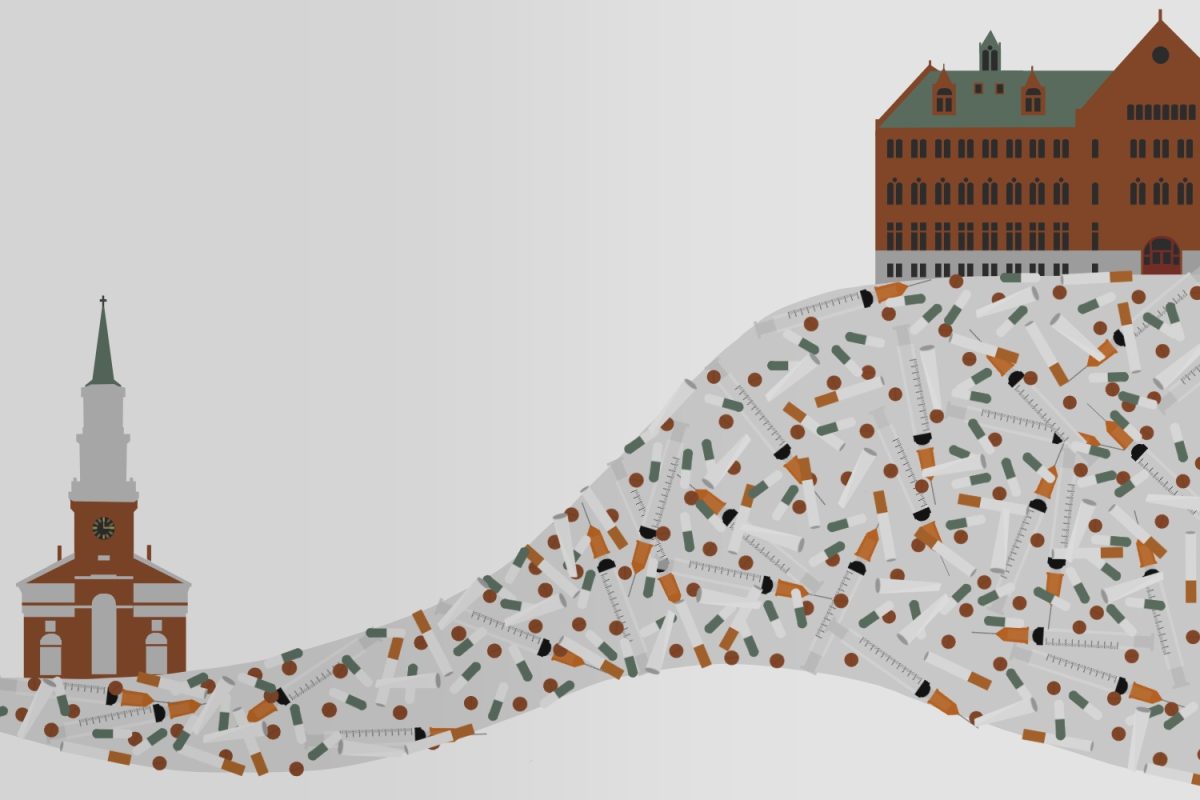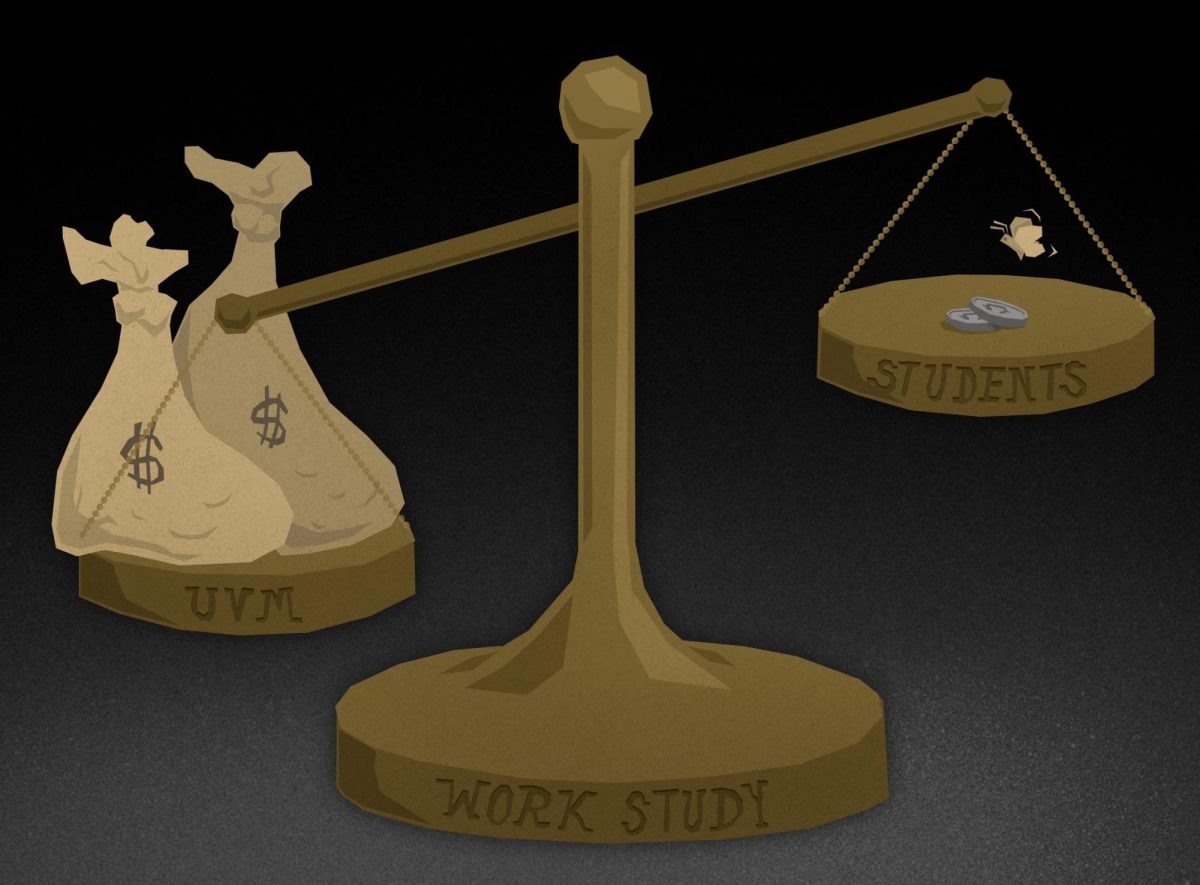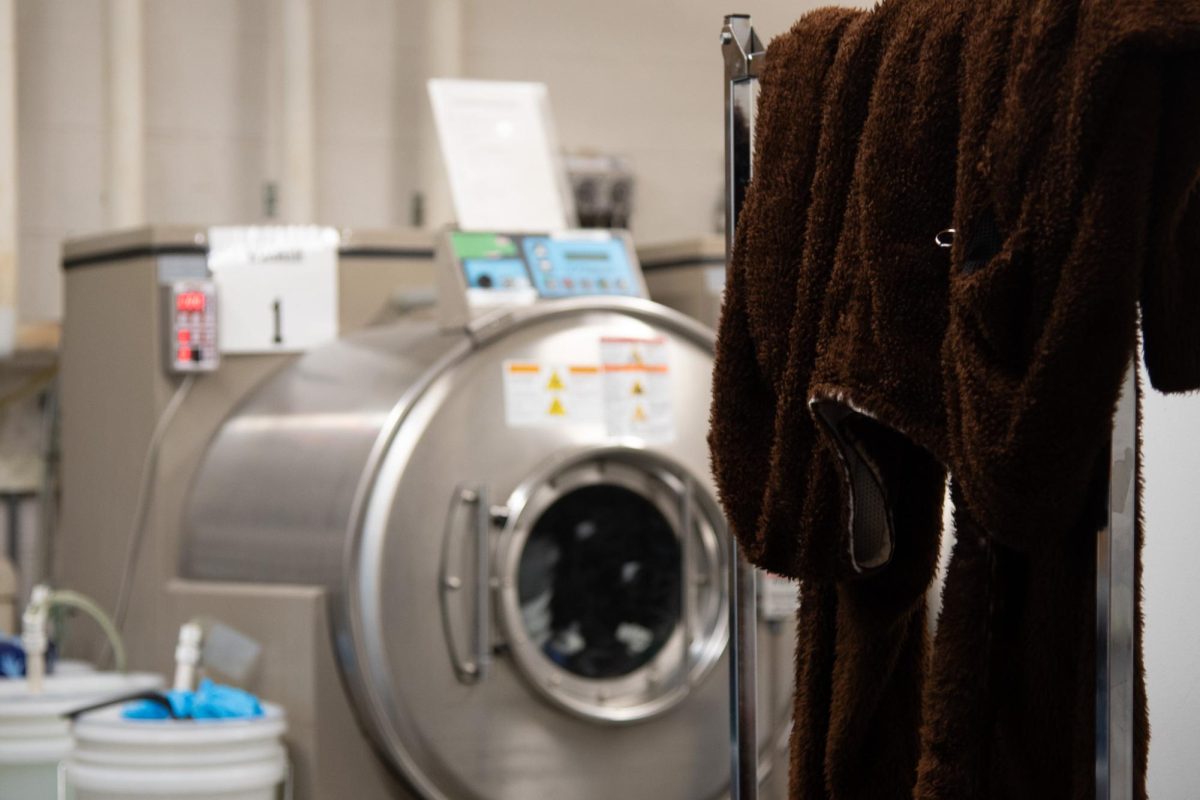This column was edited on March 23, 2025 at 15:03 to replace a broken Center for Disease Control link with one from the Federal Communications Commission. An additional resource about the opioid epidemic and opioid use disorder was also added.
In the attempt to backtrack from the effects of the opioid epidemic, the medical system has caused a new issue: the misuse of over-the-counter pain medications.
I’m not a nay-sayer of analgesics or painkillers.
Analgesics are defined as medications that relieve various types of pain, according to a March 22, 2021 Cleveland Clinic article.
Rather, the frequency of self-administered and doctor recommended analgesic usage has altered our sense of how pain is perceived and remedied.
The opioid epidemic continues to have a profound impact on pain management in the medical field.
Opioids—also known as narcotics—include both prescription medications and illegal drugs. They are defined as drugs derived from or mimicking the opium poppy plant, according to a Johns Hopkins Health article.
Commonly prescribed opioids include fentanyl and morphine. The illegal drug heroin is also considered an opioid, according to the article.
The opioid epidemic can primarily be attributed to the overprescription of opioids pushed by pharmaceutical companies—particularly Purdue Pharmaceuticals—combined with the initiative of the American Pain Society to label pain as “the fifth vital sign,” according to a March 2017 Missouri Medicine article.
As a nursing student, I can attest that we are still taught to treat pain as the unofficial fifth vital sign, frequently including it in our general assessment of patients.
The opioid epidemic is broken down into three waves. The first is labeled as the overprescription of opioids and the subsequent increase in prescription opioid-related overdoses in the 1990s.
This was followed by a rapid increase in overdose deaths involving heroin beginning in 2010.
Today, the third wave persists: a significant increase in overdose deaths involving synthetic opioids, like fentanyl, that commenced in 2013, according to the Federal Communications Commission.
The number of opioid-involved deaths increased by 15% between 2020 and 2021. Opioids have increasingly been mixed with other drugs such as xylazine, resulting in an ever-increasing amount of opioid-related overdoses, according to the CDC.
In an attempt to combat the previous overprescription of opioid medications, the prescription of opioids to first-time users decreased by 54% between 2012 and 2017, according to a May 13, 2019 NIH article.
With the decline of opioid prescriptions, the prescription of non-opioid painkillers such as NSAIDs and gabapentinoids has increased as a result, according to a Feb. 8, 2022 study by The Journal of Pain.
One of these drugs is acetaminophen, known by its brand name of Tylenol. Other common over-the-counter analgesics include Advil, Motrin and Aleve.
In a consumer survey collected by the Consumer Healthcare Products Association Educational Foundation, 66% of survey participants struggled with chronic pain.
Eighty percent of participants in the study reported that their use of OTC pain medications has either stayed the same or increased over the past two years, according to the article.
Other research shows that 81% of adults use OTC pain medicines as their first action to treat minor ailments.
I see evidence of this as I observe the people in my life. The first response to aches and pains is to pop a couple pills and then attempt to move on with the day.
I do not say this to discount pain or judge others for medication consumption, it is just an observation.
There are guidelines and resources available when it comes to using OTC pain medications, such as NSAIDs, for pain management.
The MayoClinic warns that NSAIDs have a “ceiling effect,” meaning that they are not effective above a certain dosage and may begin to cause adverse effects.
Overuse of NSAIDs in particular can increase the risk of having a heart attack or stroke. It can also contribute to liver and kidney problems, according to a Nov. 15, 2023 WebMD article.
Regardless of the effects of pain medications, no one should have to suffer with pain if there are adequate treatments.
Due to its unpleasant nature, it is only a natural desire to fix or lessen pain. Pain, however, is a multitude of sensations and so often defies the ability to be described.
Pain is breaking a bone. Pain is a piercing migraine. Pain is a deep depression or aching loneliness. Pain is the loss of a loved one or a loss of self.
The idea that pain, emotional or physical, can be treated with a tiny pill or rapid treatment continues to place bandaids on ailments without ever addressing the root issue.
I think it’s time we stop masking pain solely with medications. Instead, it is urgent that we take a look at the institutional structures and cultural mindsets surrounding pain.
Rather than immediately medicating pain, consider first working to treat the underlying causes.
From a young age, we are told to fight through pain. In athletics we are fed the motto “no pain, no gain.”
We are taught to always do the most and to push past our body’s pleading signals to stop.
Studying harder, doing more and only resting when sickness completely takes us down results in aches and nagging injuries that we attempt to mask with a few Advil.
Addressing the root problem would include resting the body and mind more, participating in activities that provide true enjoyment and being gentle with ourselves.


